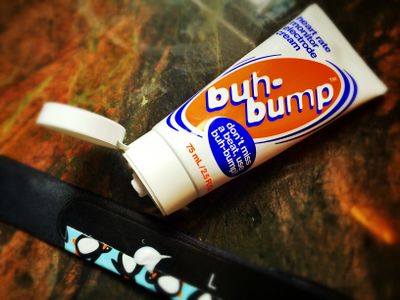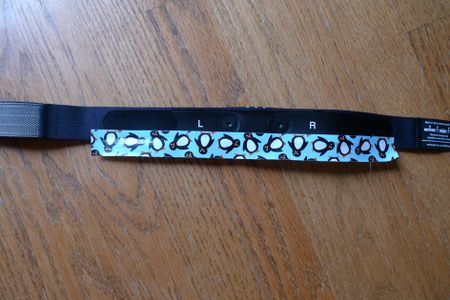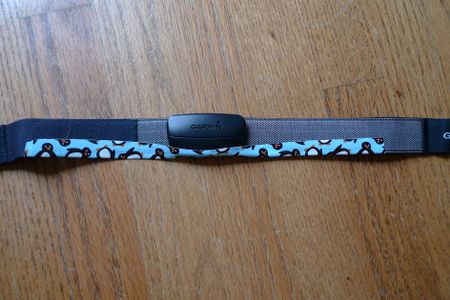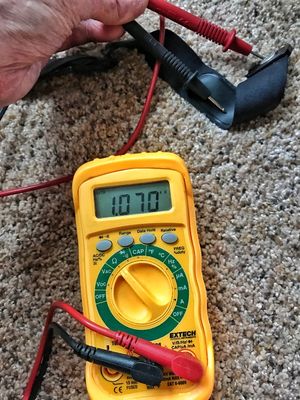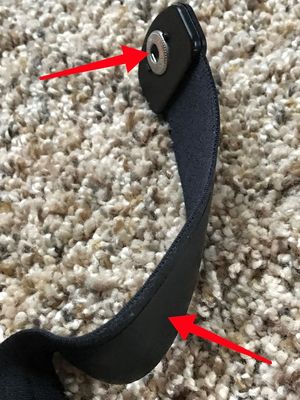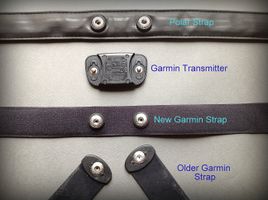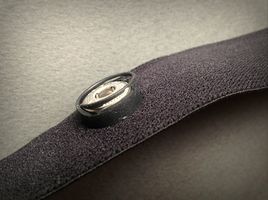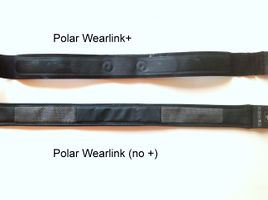Difference between revisions of "Fixing Heart Rate Monitor Problems"
User:Fellrnr (User talk:Fellrnr | contribs) |
User:Fellrnr (User talk:Fellrnr | contribs) |
||
| Line 1: | Line 1: | ||
| − | There are two main problems with [[Heart Rate Monitor| Heart Rate Monitoring]]; poor accuracy and chaffing, and there are two simple fixes. The first fix is to apply a little [http://www.amazon.com/Buh-Bump-2-5-Ounce-Heart-Monitor-Electrode/dp/B000HZD2NU Buh-Bump Electrode Cream], which improves the accuracy and provides some lubrication that reduces chaffing. The other fix is to apply some duct tape to the bottom edge of the strap, which works wonders at preventing chaffing. I had no chaffing problems with a duct taped strap during the 37 hours I was running [[2014_Badwater_135| Badwater]]. | + | There are two main problems with [[Heart Rate Monitor| Heart Rate Monitoring]]; poor accuracy and chaffing, and there are two simple fixes. The first fix is to apply a little[http://www.amazon.com/Buh-Bump-2-5-Ounce-Heart-Monitor-Electrode/dp/B000HZD2NU Buh-Bump Electrode Cream], which improves the accuracy and provides some lubrication that reduces chaffing. The other fix is to apply some duct tape to the bottom edge of the strap, which works wonders at preventing chaffing. I had no chaffing problems with a duct taped strap during the 37 hours I was running [[2014_Badwater_135| Badwater]]. There are other issues, including the strap wearing out, which are covered below. |
{| class="wikitable" | {| class="wikitable" | ||
|- valign="top" | |- valign="top" | ||
| Line 19: | Line 19: | ||
Garmin has introduced an updated form factor for their heart rate monitors which makes them much less likely to chafe. I upgraded to the [https://www.amazon.com/Garmin-HRM-Run-Black-Red-Size/dp/B01708T7NA "HRM4"], and it's greatly reduced my issues. | Garmin has introduced an updated form factor for their heart rate monitors which makes them much less likely to chafe. I upgraded to the [https://www.amazon.com/Garmin-HRM-Run-Black-Red-Size/dp/B01708T7NA "HRM4"], and it's greatly reduced my issues. | ||
[[File:GarminHRM4.jpg|none|thumb|300px|The HRM4 at the top, the older style Garmin HRM, and the Polar H7.]] | [[File:GarminHRM4.jpg|none|thumb|300px|The HRM4 at the top, the older style Garmin HRM, and the Polar H7.]] | ||
| + | =Testing a Heart Rate Monitor Strap= | ||
| + | Based on some empirical testing, I've found that the resistance between the popper contacts and the electrode pads is typically about 1.0-1.2 KΩ. A higher resistance suggests that the strap is worn out or damage and faulty readings are more likely. | ||
| + | {| class="wikitable" style="margin-left: auto; margin-right: auto; border: none;" | ||
| + | |- valign="top" | ||
| + | |[[File:HRM Testing (1).jpg|none|thumb|300px|Test the resistance between the contact for the HRM transmitter (the popper) and the electrode that touches your chest.]] | ||
| + | |[[File:HRM Testing (2).jpg|none|thumb|300px|Here's another look at the two places to test.]] | ||
| + | |} | ||
=Using the Polar Wearlink Strap= | =Using the Polar Wearlink Strap= | ||
You can get a fabric [http://www.amazon.com/dp/B000F7F64I Polar Wearlink Replacement Strap] that works nicely with the Garmin transmitter. However, Polar replaced the Wearlink strap with the Wearlink+, so the original design is hard to come by. (The new Wearlink+ is nearly identical to the Garmin strap and not worth the upgrade.) | You can get a fabric [http://www.amazon.com/dp/B000F7F64I Polar Wearlink Replacement Strap] that works nicely with the Garmin transmitter. However, Polar replaced the Wearlink strap with the Wearlink+, so the original design is hard to come by. (The new Wearlink+ is nearly identical to the Garmin strap and not worth the upgrade.) | ||
Revision as of 19:11, 20 April 2017
There are two main problems with Heart Rate Monitoring; poor accuracy and chaffing, and there are two simple fixes. The first fix is to apply a littleBuh-Bump Electrode Cream, which improves the accuracy and provides some lubrication that reduces chaffing. The other fix is to apply some duct tape to the bottom edge of the strap, which works wonders at preventing chaffing. I had no chaffing problems with a duct taped strap during the 37 hours I was running Badwater. There are other issues, including the strap wearing out, which are covered below.
Contents
[hide]1 Other Fixes
There are a number of problems you can still get with the Heart Rate Monitoring.
- Unlike the Polar system, the contacts on the Garmin transmitter tend to rust, so it's important to disconnect the transmitter from the strap after each use. You can see a little of the rust in the picture above.
- If you do get rust on the transmitter connecters, then a wire brush can fix the problem. I used these small brushes that worked well for me.
- A low battery can result in bad reception, and the watch does not always report a low battery condition properly.
- When replacing the battery, insert the new one upside down for a few minutes to short out the contacts. This will reset the monitor and may prevent some reception problems. (I've had to do this with both Garmin and Polar systems.)
- A factory (master) reset of the watch may be required. I found this fixed a number of problems with my 310XT, including heart rate monitoring.
- The straps can be damaged by washing and require careful hand washing, not machine washing. If you damage a strap, it needs replacement.
- Interference from overhead power lines used to be a problem, but the modern systems have reduced this dramatically.
- All of the soft straps require periodic replacement, so you may need a new one.
2 Garmin's HRM4
Garmin has introduced an updated form factor for their heart rate monitors which makes them much less likely to chafe. I upgraded to the "HRM4", and it's greatly reduced my issues.
3 Testing a Heart Rate Monitor Strap
Based on some empirical testing, I've found that the resistance between the popper contacts and the electrode pads is typically about 1.0-1.2 KΩ. A higher resistance suggests that the strap is worn out or damage and faulty readings are more likely.
4 Using the Polar Wearlink Strap
You can get a fabric Polar Wearlink Replacement Strap that works nicely with the Garmin transmitter. However, Polar replaced the Wearlink strap with the Wearlink+, so the original design is hard to come by. (The new Wearlink+ is nearly identical to the Garmin strap and not worth the upgrade.)
- Heart Rate Monitor Straps
